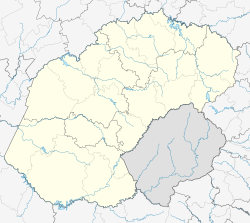
The Free State, formerly known as the Orange Free State, is a province of South Africa. Its capital is Bloemfontein, which is also South Africa's judicial capital. Its historical origins lie in the Boer republic called the Orange Free State and later the Orange Free State Province.
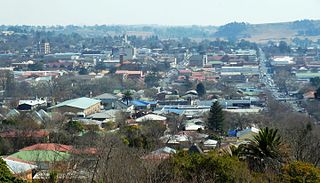
Bethlehem is a city in the eastern Free State province of South Africa that is situated on the Liebenbergs river along a fertile valley just north of the Rooiberg Mountains on the N5 road. It is the fastest growing city in the Free state province, with its target of being the third largest city after Bloemfontein and Welkom.
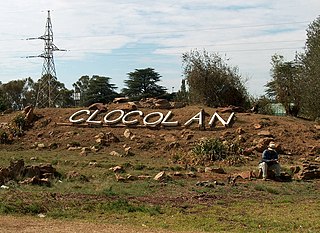
Clocolan, officially renamed Hlohlolwane, was established in 1906, is a small town in the Free State Province of South Africa. The Basotho called the place Hlohlolwane. New inhabitants mispronounced the name and called it Clocolan.

Fouriesburg is a small town situated at the junction of the R711 and R26 routes in the eastern Free State, South Africa. It is near the Maluti Mountains and only 10 km from Caledon's Poort border post, which gives access to Lesotho.
Rosendal is a small farming town and arts colony 45 km north of Ficksburg in the Free State province of South Africa which was founded in 1908. It has become a popular tourist destination, known for spectacular scenery, including the surrounding Witteberg mountains, and is home to a community of artists and small business owners. The town has a number of attractive buildings and restored early-20th-century homes. The quality of architectural design for newly built homes is notable, adding to the town's attractive character. This includes a number of "Tiny Homes" - less than 100 square meters - and which has earned Rosendal a reputation for becoming South Africa's tiny home capital. There are several art galleries, cafes and good restaurants as well as a heritage district of restored buildings in the former downtown. Until recently live theatre was hosted here by well known Afrikaans language actor, Chris Van Niekerk.

Senekal is a town situated on the banks of the Sand River in the eastern part of the Free State province of South Africa. It was named after Commandant FP Senekal. It is the second largest town in Setsoto Municipality after Ficksburg, the largest town and capital of Setsoto. Senekal lies on the N5 national road between Winburg on the west and Bethlehem to the east. It has two townships, Matwabeng and OR Tambo Section, the latter being the latest, largest and fastest growing.

The R26 is a provincial route in Free State, South Africa that connects Rouxville with Villiers via Zastron, Wepener, Ladybrand, Ficksburg, Bethlehem & Reitz.
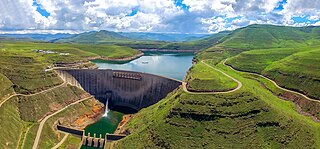
The Katse Dam, a concrete arch dam on the Malibamat'so River in Lesotho, is Africa's second largest double-curvature arch dam.. The dam is part of the Lesotho Highlands Water Project, which will eventually include five large dams in remote rural areas. The dam is just below the confluence of the Bokong River, which forms the western arm of the Katse reservoir.

The Lesotho Highlands Water Project (LHWP) is an ongoing water supply project with a hydropower component, developed in partnership between the governments of Lesotho and South Africa. It comprises a system of several large dams and tunnels throughout Lesotho and delivers water to the Vaal River System in South Africa. In Lesotho, it involves the rivers Malibamatso, Matsoku, Senqunyane, and Senqu. It is Africa's largest water transfer scheme.

Concor Holdings (Proprietary) Limited. is a South African construction and mining services company. It is active throughout Southern Africa, involved in civil engineering, buildings, roads and mining projects. Concor returned as an independent brand in late 2016.
The Diocese of the Free State is a diocese in the Anglican Church of Southern Africa.
Sandstone Estates (Pty) Ltd is a large commercial agricultural enterprise covering over 7,000 hectares, located on the border with Lesotho in South Africa's Eastern Free State province, close to the Maluti Mountains. The nearest town is Ficksburg, 14 kilometres (8.7 mi) away on the R26. It is a hub of transport preservation.

The Volksblad is an Afrikaans-language daily newspaper published in Bloemfontein, South Africa, and distributed in the Free State and Northern Cape provinces, where it is the largest Afrikaans daily. It is South Africa's oldest Afrikaans The paper is owned by Media24.

The As River is a tributary of the Liebenbergsvlei River in the eastern Free State, South Africa. Since 1968 it is impounded by the Sol Plaatje Dam at its confluence with the latter river, just east of Bethlehem. Its origin is some 35 km southeast of Bethlehem, on the northern slopes of the Rooiberge, near Clarens. With the opening of the northern delivery tunnel of the Lesotho Highlands Water Project in 1998, the once tiny stream was transformed to a strong-flowing river.

Setsoto Municipality is a local municipality within the Thabo Mofutsanyane District Municipality, in the Free State province of South Africa. Setsoto is a Sesotho word meaning "beauty". The seat is Ficksburg. Other towns include Senekal, Clocolan and Marquard. The municipality is rich in agriculture and is known for producing cherries.
The sport of football in the country of Lesotho is run by the Lesotho Football Association. The association administers the national football team, as well as the Premier League. Football is the most popular sport in the country.
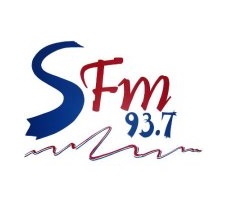
Setsoto FM Stereo is a South African community radio station based in the Free State. The station is directly responsible and accountable to Maluti Media Network as a community-based project; Setsoto FM is operated by volunteers from within the community of Greater Ficksburg and its surrounding areas. Its vision is to create an empowered and responsible community in a way that is accountable, participatory and transparent.
For thousands of years, a pilgrimage has been made by the Basotho people to a network of sacred caves to communicate with the spiritual world. The caves also contain dinosaur footprints and ancient rock paintings. The caves are located between the eastern parts of the Free State and Lesotho. These sacred caves are often described as 'the key to religion' in Southern Africa.
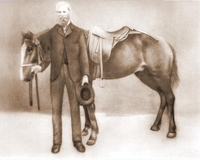
General Johan Isak Jacobus Fick was the founder of Ficksburg, a town in the Free State province, South Africa. After the Basotho Wars, peace was made and the town named after Johan Fick. He was also known as Commandant Generaal Johan Fick.



